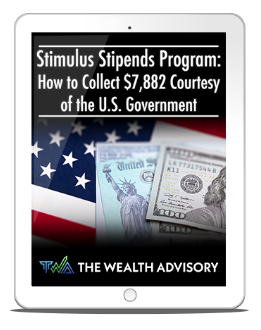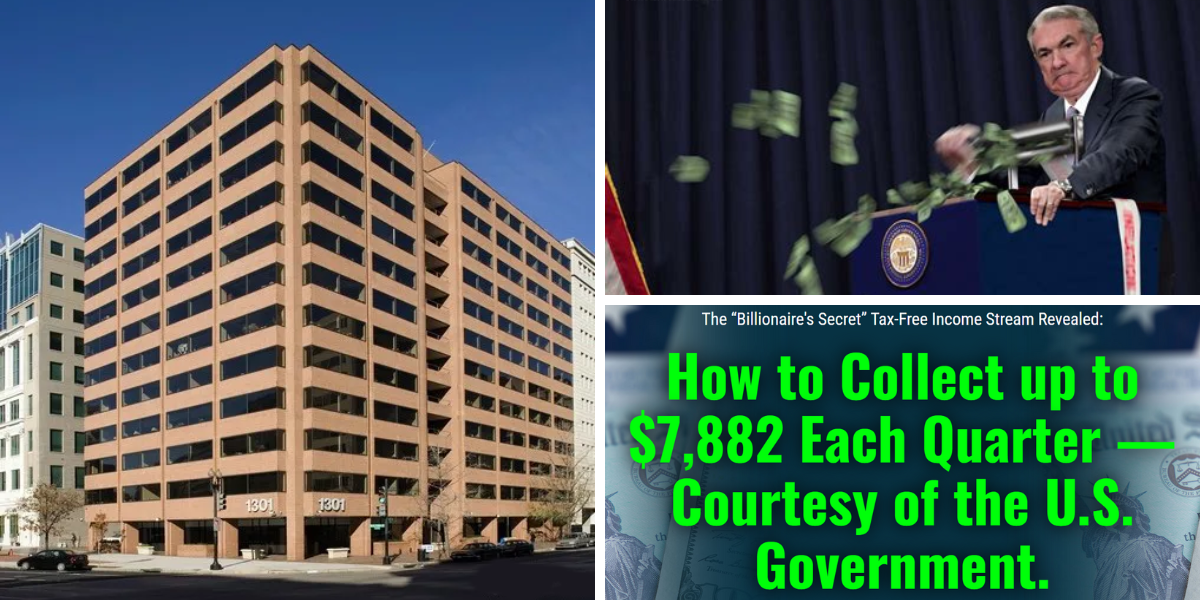Jason Williams is teasing…free money!? Not exactly.
It's something he calls “Stimulus Stipends” and they're worth as much as $7,882 every quarter.
The Teaser
Stimulus Stipends were created by Congress to open up a new income opportunity for everyday Americans and all we need to get started is $15 bucks.

Jason Williams is a former Morgan Stanley investment banking analyst who prides himself on finding the best investments before the rest of the crowd gets there. We have previously covered such JW teasers as “Plug-in Payouts“ and “Robot Royalties“ here at Green Bull.
At the start of the teaser, a stream of everyday Americans is paraded to us as examples of Stimulus Stipend recipients, but there's just one problem.
The first pic of “Charlie Davis”, a Seward, Nebraska, native:

Is actually a stock image I found via a Google image reverse search.
Does this make Stimulus Stipends illegitimate? Not necessarily. It just tells us Jason needs better material for his pitch.
The origins of Stimulus Stipends can be traced back to a 19-page memorandum issued in April by the Office of Management and Budget.
This memo instructed the heads of every major government agency to execute the president's plan to get the nation through the current tide of rising inflation, strained supply chains, and high rates of unemployment.
Thus a wave of Stimulus Stipends began to flow from various government income programs, including the one at the center of Jason's pitch – the Federal Buildings Fund.
Collecting Government Rent Money
What many people don't realize is that the federal government doesn't actually own many of the buildings they operate out of.
Agencies from the CIA, IRS, FDA, EPA, and many more are all operating out of rented buildings.
The way it works is, rather than each government department paying their own rent. The Feds simply pool all of these rent payments into the Federal Buildings Fund.
All told, $18.3 billion will soon flow out of over 9,600 buildings scattered throughout the United States and, ultimately, into the hands of everyday Americans because of a legal loophole.
External partners are providing the government buildings up and down America and they are required to pay us “Stimulus Stipends” or dividends because of Section 857(a)(1)(A) of the Internal Revenue Code, which states that “90% of real estate investment trust proceeds must be distributed.”
So there you have it, Jason is talking about REIT dividends, which are very legit, and he believes they are the key to amassing wealth for your family and future generations to come.
The Pitch
Jason has put together a complete step-by-step guide on how to begin receiving REIT dividends today, it's called: “Stimulus Stipends Program: How to Collect $7,882 Courtesy of the U.S. Government.”

The report is “free” if we take his flagship income-focused investing service, The Wealth Advisory, for a trial run. A subscription costs $99 for the first year and includes two bonus reports, at least 12 more recommendations that could quote “easily double or triple our investment even further”, and it's all backed by a 180-day money-back guarantee, which admittedly is pretty good.
The Case for Federal REITs
There are several reasons why leasing commercial real estate to the government is a highly profitable business.
First, CNBC recently reported that Biden wants to grow the federal workforce to its highest levels since WWII.
Since the government is unfortunately adding entire Super Bowl stadiums' worth of employees to the federal workforce, this means it needs to rapidly acquire buildings to house them all.
So far the government has committed to leasing at least 10 new buildings by the end of this year, which will add a further $31.78 million per building on average into the Federal Buildings Fund. However, this is just the beginning and much more space will be needed.
Second, by renting to federal government agencies, you get guaranteed monthly payments.
Some residential landlords who rent to Section 8 tenants know what I am talking about here. The U.S. Department of Housing and Urban Development (HUD) will pay your tenant's rent every month if your property meets certain criteria. Nothing beats the peace of mind knowing you won't have to kick in any doors like a bail bondsman just to get paid every month.
Lastly, REITs are required by law to distribute at least 90% of taxable income to unitholders. This means a steady stream of cash flow you can count on every month or quarter, depending on your REIT distribution schedule.
All of these factors combine to make Federal REITs a quality investment for both long-term capital appreciation and short-term income.
A Few Good Fed REITs
Jason doesn't tease any specific Federal REITs in his presentation, but here are a few examples for illustrative purposes.
The first is an obvious one thanks to its name, Easterly Government Properties Inc. (NYSE: DEA).
True to its ticker symbol, Easterly leases Class A commercial properties to federal government agencies such as the Drug Enforcement Administration and the FBI. It's about time some taxpayer dollars spent funding these agencies came back to us.
Easterly's portfolio currently comprises about 90 properties across 26 states and units carry an outsized 9% annual yield.
Although not a pure play like Easterly, Vornado Realty Trust (NYSE: VNO) has extensive property holdings leased to government agencies, like the Department of Defense (DoD) in Washington, DC, and New York. Besides this, VNO also owns some prime Manhattan real estate (among the most expensive in the world), including 10 million square feet in the newly developed Penn District.
VNO units are currently selling at a 25% discount to their net asset value (NAV).
Finally, there is Boston Properties Inc. (NYSE: BXP). Originally founded in 1970 and publicly listed in 1997, BXP is the grandaddy of REITs.
Like VNO, BXP doesn't exclusively lease to government tenants. However, the property trust does have significant exposure to Federal government renters, including the CIA, the Director of National Intelligence, and the Defense Intelligence Agency.
Will Stimulus Stipends Provide Financial Freedom?
The short and simple answer is yes and no.
REIT dividends can go a long way if you already have a substantial sum to invest. A 9% annual yield on $250,000 is a lot different than the same 9% on $20,000.
To begin accumulating that sought-after $250k, buying high-yielding REITs below their NAV and reinvesting the dividends for a period to increase your principal isn't a bad idea. As the old adage goes, “Don't wait to buy real estate, buy real estate and wait.”
Quick Recap & Conclusion
- Jason Williams teases something he calls “Stimulus Stipends” that pay as much as $7,882 every quarter.
- What Jason calls “Stimulus Stipends” are actually REIT dividends, which are legit, and he believes they are the key to amassing wealth for your family and future generations to come.
- A complete step-by-step guide on how to begin receiving REIT dividends called “Stimulus Stipends Program: How to Collect $7,882 Courtesy of the U.S. Government” is ours with a subscription to Jason's flagship income-investing advisory service, The Wealth Advisory. A subscription costs $99 for the first year.
- No specific REITs are teased, but we provided a few examples of property trusts with federal government tenants and above-average dividend yields. These include Easterly Government Properties Inc. (NYSE: DEA), Vornado Realty Trust (NYSE: VNO), and Boston Properties Inc. (NYSE: BXP).
- REITs won't appreciate to the moon like an early-stage tech darling, but they also won't crash like one either. REITs with long-term government tenants in place can be a steady source of income and capital appreciation during highly uncertain times.
Are REITs with federal government exposure part of your portfolio? Let us know your experience in the comments below.

